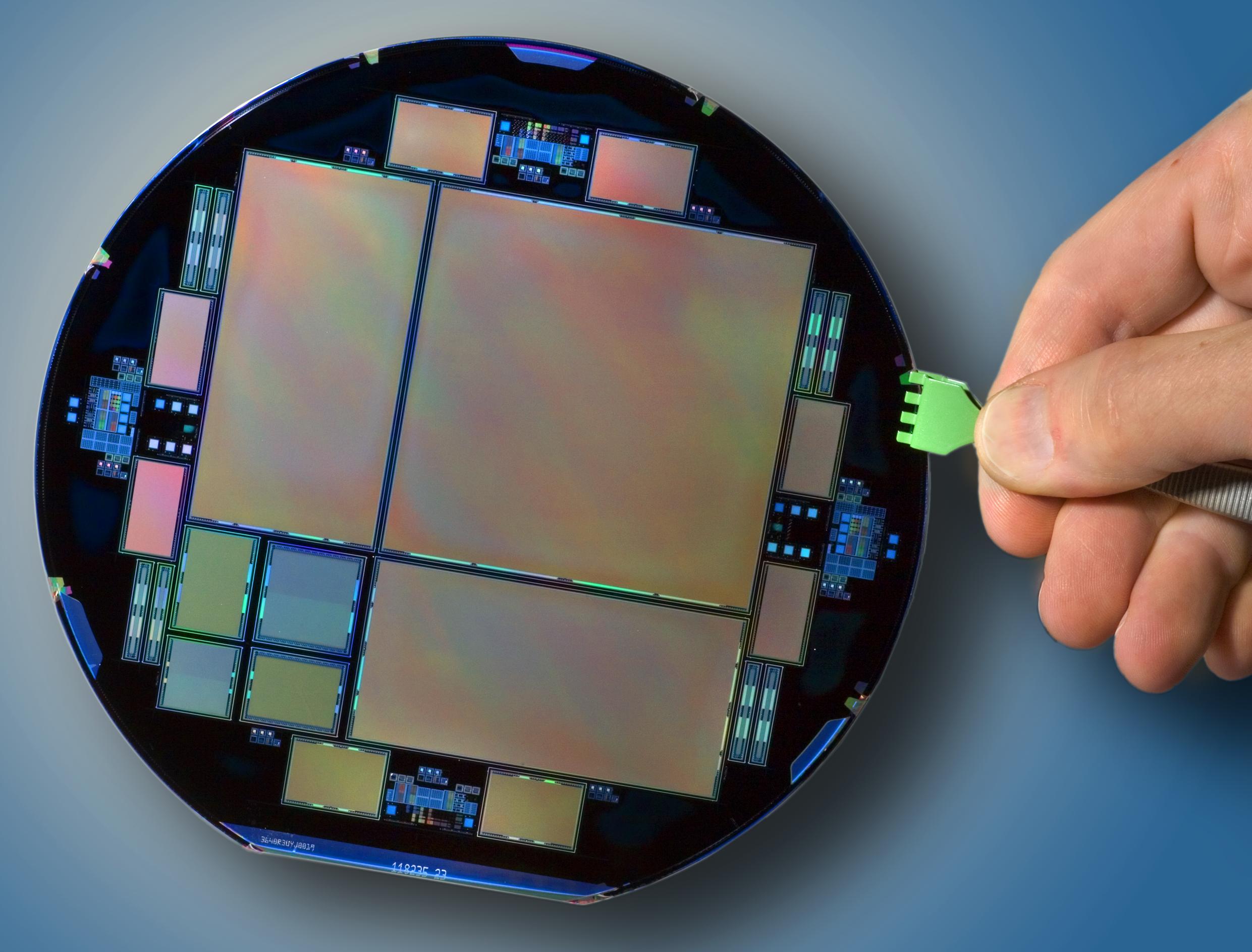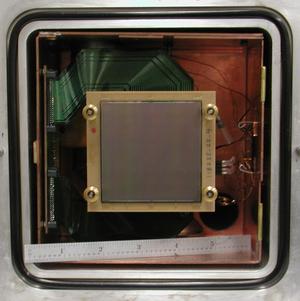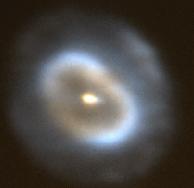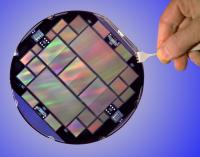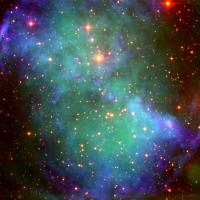
| |
False color image of the Dumbbell Nebula in Vulpecula
(M27, NGC 6853) using a shocking red 2kx2k CCD from Fab Run 2,
courtesy of Nigel Sharp, Rich Reed, Dave Dryden,
Dave Mills, Doug Williams, Charles Corson, Roger Lynds and
Arjun Dey/NOAO/WIYN/NSF
WIYN 3.5-m, 2001 Jun 7
BLUE: Narrow-band H-alpha (6565/47; W13) , 300 s
GREEN: Narrow-band [SIII] (9545/27; KP1537), 3x600 s
RED: Intermediate band filter (includes HeII 10214) (10205/933; KP920), 6x300 s
Field of view approximately 276"
(CCD characterized and packaged by UCO/Lick)
|

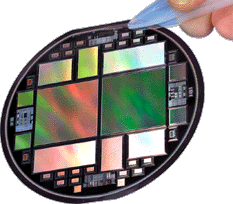
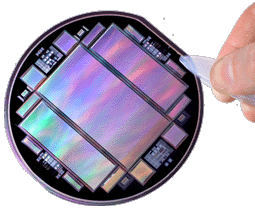
 Webmaster: Don Groom
Webmaster: Don Groom
